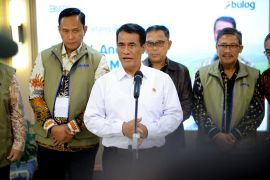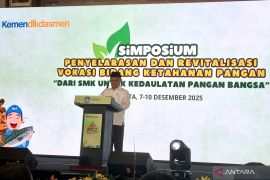Following a coordination meeting on food self-sufficiency in Jakarta on Monday, he stated that the figure was encouraging, especially given the natural challenges such as El Niño and extreme weather throughout the year.
"If I am not mistaken, we are only short by 500,000 tons compared to the previous year—even with El Niño, La Niña, and drought," he said.
At the beginning of the year, a large deficit in rice production was projected, Amran noted.
Initial projections suggested a potential rice supply shortage of around 5 million tons due to the impacts of El Niño and La Niña, which caused droughts and significant climate disruptions in several rice-producing areas.
However, despite these challenges, Indonesia's rice production only saw a slight decline of about 500,000 tons compared to the previous year, Amran added.
He expressed confidence that Indonesia would achieve self-sufficiency in rice by 2025, with production targeted to reach 32 million tons this year.
The government is working towards achieving food self-sufficiency as quickly as possible.
The projected increase of 1 million tons in rice production in 2025 compared to 2024 is expected to meet domestic needs, Amran assured.
Statistics Indonesia has estimated the rice harvest area in 2024 at 10.05 million hectares, reflecting a decline of 167,250 hectares, or 1.64 percent, compared to 10.21 million hectares in 2023.
This year, the production of dry milled grain is estimated to reach 52.66 million tons, a decrease of 1.32 million tons, or 2.45 percent, compared to 53.98 million tons the previous year.
Meanwhile, rice production for population consumption in 2024 is estimated at 30.34 million tons, down 757,130 tons, or 2.43 percent, from 31.10 million tons in 2023.
Related news: Indonesian VP inspects rice planting machines in Langkat paddy fields
Related news: Prabowo confident Indonesia will stop rice imports by 2025
Translator: Muhammad Harianto, Yashinta Difa
Editor: Anton Santoso
Copyright © ANTARA 2024












